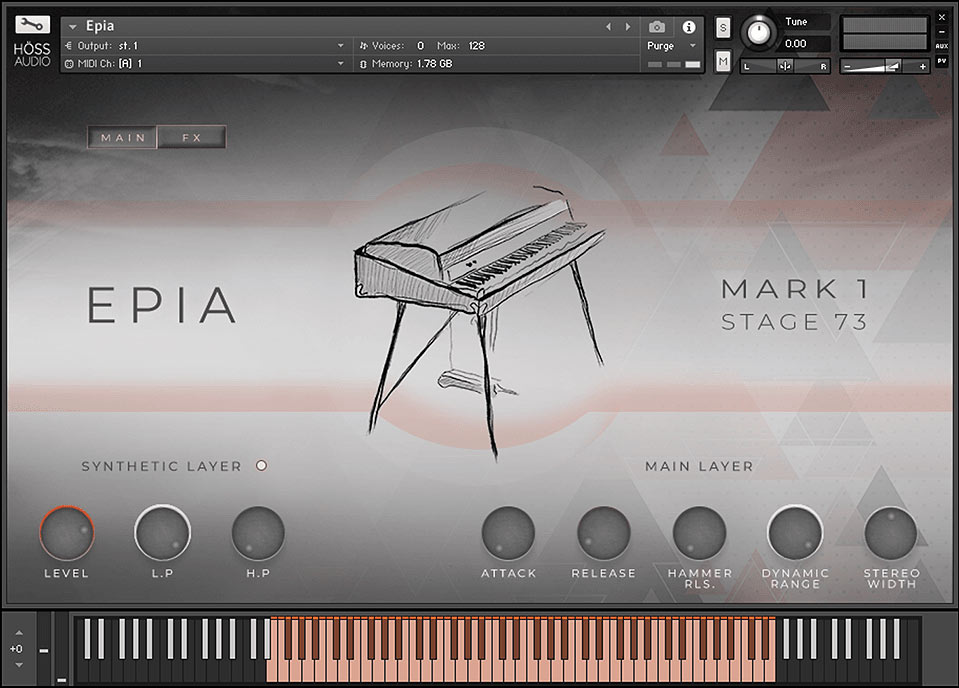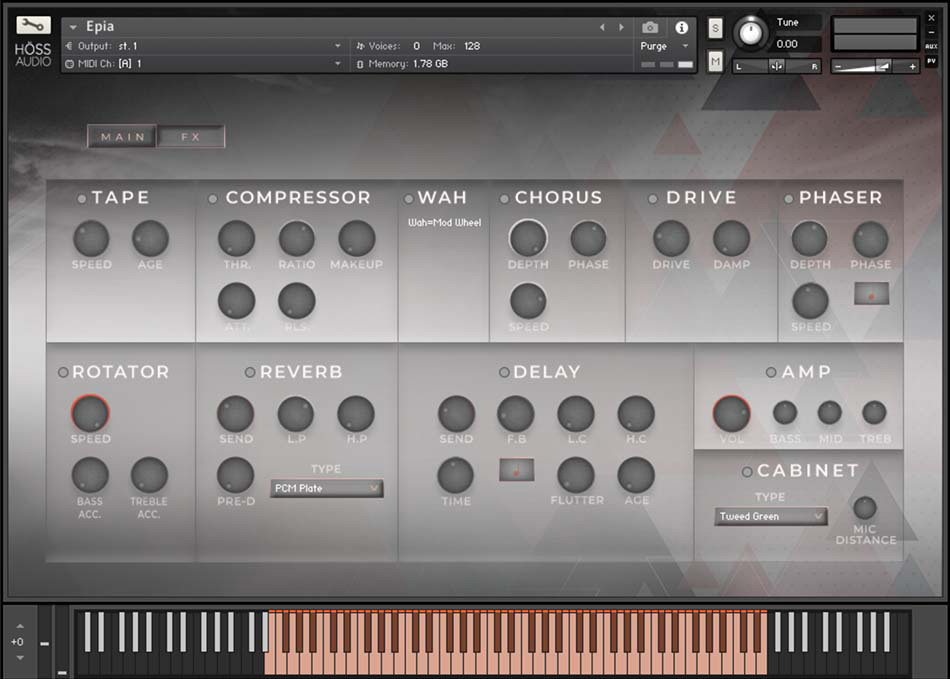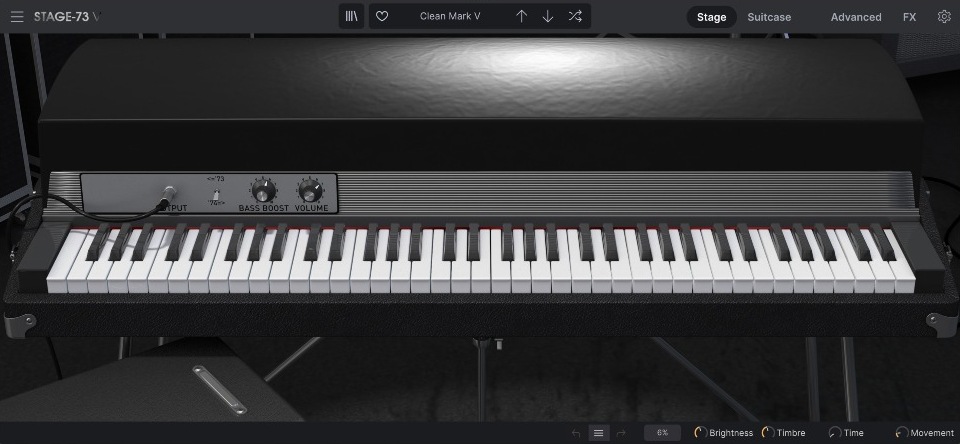HÖSS AUDIO "Epia" Review (Rhodes Stage 73 Electric Piano Instrument)
I used it because I had obtained it.
Manufacturer Info.
EPIA is a deeply sampled Rhodes Stage 73 library for Kontakt. It contains a warm, flexible sound and a set of matching effects that cover most needs, and to take it even further, an optional interactive synth engine has been added under the name "Synthetic Layers".
The Synthetic Layer is a simple synth engine programmed to respond to velocity, making the synth waveform more or less complex in response to velocity. EPIA has nine effects, and the user can choose between two outputs: direct output, or more Output via a virtual amplifier with a set of matching cabinets for character, EPIA is perfect for a wide range of sounds, from rich and creamy to screaming, overdriven funky E.piano.
Features
- A/R envelope
- Hammer release sound
- Dynamic range limiter
- Stereo widener
- Synthesis layer with LP and HP filters
Effects
- Tape effect
- Compressor
- WAH pedal (controlled by modulation wheel)
- Chorus
- Overdrive
- Phasers
- Rotator
- Convolution reverb (19 different reverbs)
- Tape Delay
- Outputs: Direct OR Amplified
- 11 Cabinets
Technical Specifications
- 1.9 GB
- 532 samples
- 5 round-robin
- 10 velocity layers per note
Quotes from Epia
Features
HÖSS AUDIO "Epia" is a Rhodes Stage 73 electric piano instrument for Kontakt.
The UI consists of two screens.
The attack-release dynamic range and stereo width as well as the noise on hammer release can be adjusted. synthetic layer is quite a quirk, a simple synth engine programmed to respond to velocity, and the synth's It is supposed to make the waveform more or less complex. It is not a normal filter, but when you use it, you can get a 16-bit sound by increasing the L.P. value, as if there is some kind of internal synthesizing going on.
The FX screen has all the usual effects, but there are also tape effects (pitch), cabinet, and rotary effects. It is convenient to be able to use these effects within the sound source, but there are some effects that I think could be used with dedicated effects, so I can't say for sure.
Evaluation
This is a deep sampling sound source with a total capacity of about 2 GB. The sound is not extremely thin, and it has a moderately rich sound, but the tone is rustic. Compared to other sound sources, the Rhodes' bell-like hammer sound is subdued, so it does not have a strange soft sound source smell, which can be said to be natural.
Compared to the Arturia STAGE-73, which uses physical modeling technology to reproduce the same model, the sound is a bit thinner, but this is not necessarily a demerit. This is a good impression. It is not a sound source that is very assertive in tone, but it has a light touch and yet retains a good amount of electronic instrumental texture, so those looking for something with a subtle, emotional feel and not too much of a digital feel may find it a good fit.




